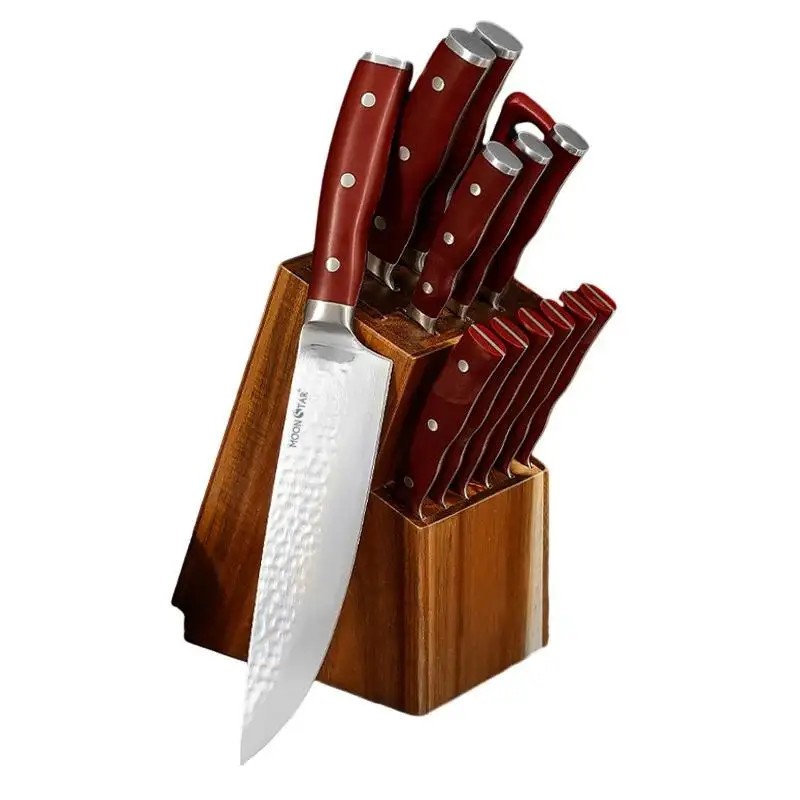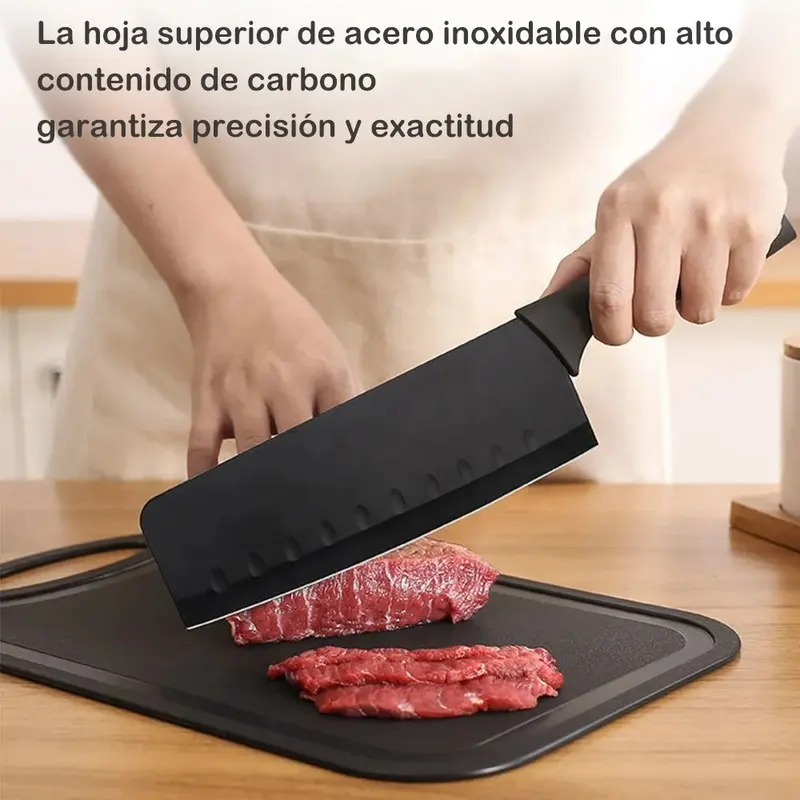Choosing the right kitchen knife is essential for achieving precision and efficiency in the art of cutting. Different knives are designed for specific tasks, and having the appropriate knife for each job can enhance your cooking experience. Here’s a guide to help you choose the right kitchen knife for various cutting needs:
1. Chef’s Knife:
- Size: 8 to 10 inches.
- Purpose: All-purpose knife for chopping, slicing, dicing, and mincing.
- Features: Broad, slightly curved blade for versatility and rocking motion.
2. Paring Knife:
- Size: 3 to 4 inches.
- Purpose: Precision tasks such as peeling, trimming, and intricate cutting.
- Features: Small, narrow blade for detailed work.
3. Santoku Knife:
- Size: 5 to 7 inches.
- Purpose: Versatile knife for slicing, dicing, and chopping.
- Features: Granton edge (hollowed-out grooves) to prevent food sticking.
4. Bread Knife:
- Size: 8 to 10 inches.
- Purpose: Slicing through bread without crushing it.
- Features: Serrated edge for efficient cutting through crusty exteriors.
5. Utility Knife:
- Size: 4 to 6 inches.
- Purpose: General-purpose knife for various cutting tasks.
- Features: Mid-sized blade for versatility between a chef’s and paring knife.
6. Carving Knife:
- Size: 8 to 10 inches.
- Purpose: Slicing thin, precise cuts of cooked meat.
- Features: Long, narrow blade for clean slicing.
7. Boning Knife:
- Size: 5 to 7 inches.
- Purpose: Removing bones from meat or filleting fish.
- Features: Flexible, narrow blade for precision.
8. Cleaver:
- Size: 6 to 8 inches.
- Purpose: Chopping through bones and large cuts of meat.
- Features: Heavy and durable blade for tough tasks.
9. Filleting Knife:
- Size: 6 to 9 inches.
- Purpose: Filleting fish and deboning meat.
- Features: Thin, flexible blade for precision.
10. Serrated Utility Knife:
- Size: 5 to 7 inches.
- Purpose: Cutting through items with a tough exterior and soft interior (e.g., tomatoes, sausages).
- Features: Serrated edge for effective slicing without crushing.
11. Slicing Knife:
- Size: 8 to 12 inches.
- Purpose: Slicing large cuts of cooked meat.
- Features: Long, thin blade for smooth, precise slicing.
12. Cheese Knife:
- Purpose: Cutting through various types of cheese.
- Features: Often has a pronged tip for serving slices.
13. Tomato Knife:
- Purpose: Slicing through tomatoes and other soft fruits.
- Features: Serrated edge and a pointed tip for precision.
14. Meat Cleaver:
- Purpose: Heavy-duty chopping through bones and tough meat.
- Features: Thick, heavy blade with a broad surface.
15. Japanese Nakiri Knife:
- Purpose: Precision vegetable chopping and slicing.
- Features: Thin, rectangular blade with a straight edge.
16. Oyster Knife:
- Purpose: Opening oysters and shellfish.
- Features: Short, sturdy blade with a pointed tip.
17. Deba Knife:
- Purpose: Traditional Japanese knife for filleting and chopping fish.
- Features: Heavy, thick blade with a single bevel.
When choosing a kitchen knife, consider the tasks you perform most frequently and invest in high-quality knives. Keep in mind that proper maintenance, including regular sharpening, is crucial for ensuring the longevity and effectiveness of your knives.



